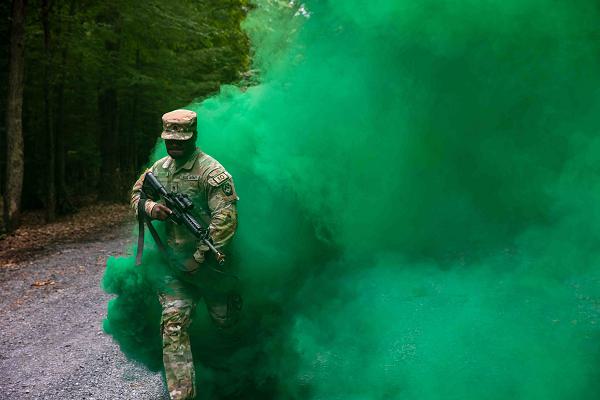
Fort Indiantown Gap, Pennsylvania. (July 31, 2024): Improvised Explosive Devices (IEDs) are responsible for killing or maiming thousands of American troops and the Army is determined to smoke them out. In this photo by Sergeant First Class Brandon Nelson, Sergeant Brandon Danner advances toward an opposing force through smoky concealment during an improvised explosive device awareness exercise.
Between 2010 and 2022, 14,242 incidents involving IEDs were recorded with a staggering 147,482 civilian casualties (40,840 killed, 106,642 injured). Many of these attacks occurred in populated areas where ninety percent of the victims were civilians. These incidents chiefly took place in Iraq, Pakistan, Afghanistan, and Nigeria. In Iraq, IEDs were responsible for approximately 63% of coalition deaths.
An improvised explosive device is a "homemade" bomb or military ordnance converted for such use. Terrorists use them to destroy, incapacitate, harass, or distract their opponent. These bombs are usually constructed of conventional military explosives such as an artillery shell and have an attached detonating mechanism.
An IED has five components: a switch (activator), an initiator (fuse), container (body), charge (explosive), and a power source (battery). They are triggered using various methods including remote control, infrared or magnetic triggers, or pressure-sensitive bars or trip wires (victim-operated). In some cases, multiple IEDs are wired together and spread out along a roadway to attack a convoy of vehicles. Terrorists often use standard consumer electronics to set off their bombs including mobile phones, garage door openers, and even washing machine timers.
These weapons are made even more lethal when using “shaped charges” to penetrate armor or by adding fragmentation, such as ball bearings or rocks, to cause damage great distances from the blast.
Through IED awareness training, American troops will know how to defeat these horrific weapons.


